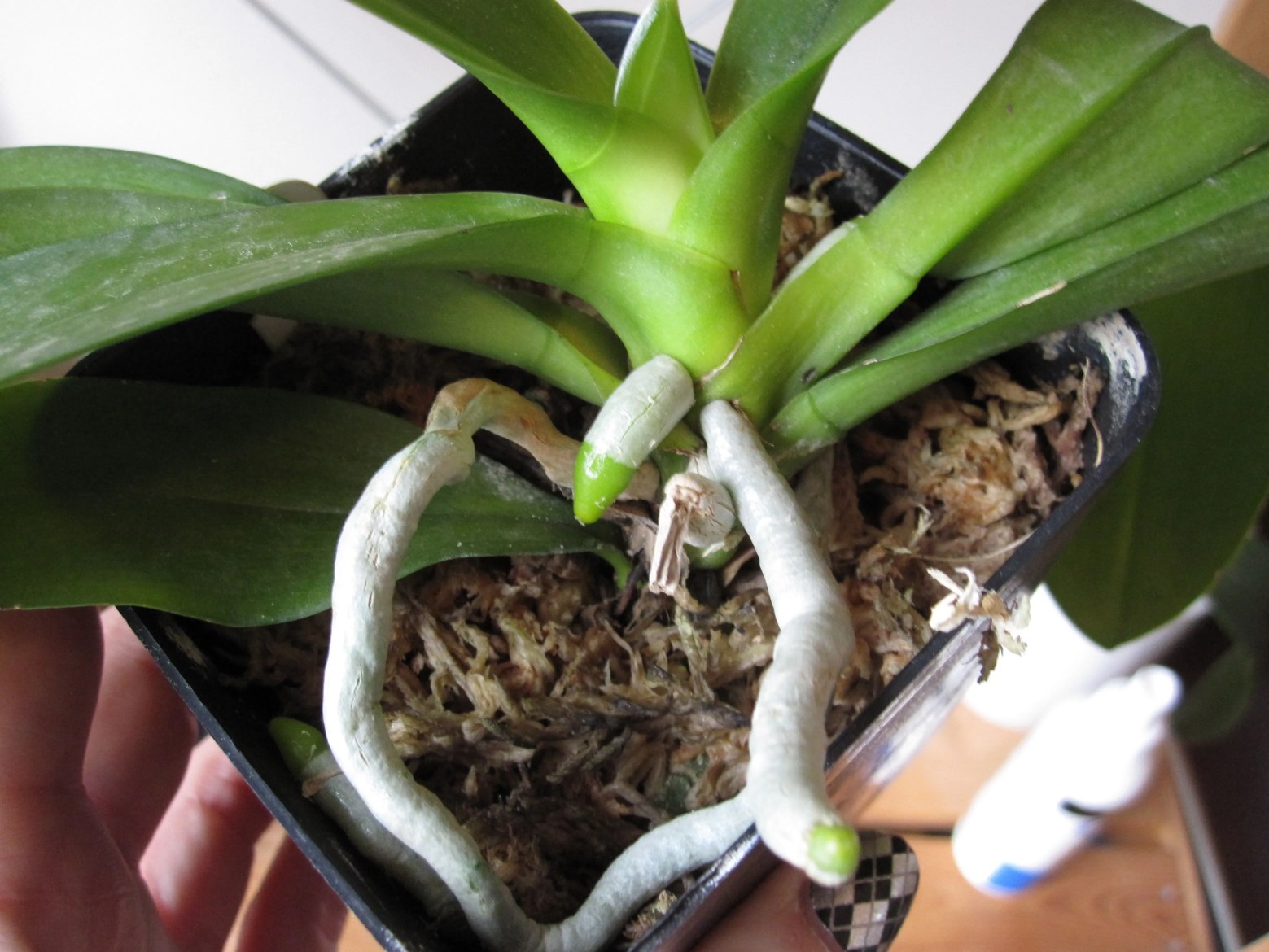Orchid roots are key indicators of your plant’s health Paying close attention to their color, texture, and flexibility can help you identify and address issues early. So what’s the deal when orchid roots turn black but remain firm? Let’s explore the causes and solutions for this specific root symptom
Why Do Orchid Roots Turn Black?
Blackened roots on orchids arise for a few key reasons:
- Bacterial or fungal infection
- Environmental stresses like low humidity
- Age-related decline
In the early stages, infections manifest as soft, mushy black roots. But over time, diseased roots shrivel and dry out becoming firmer in texture. Older roots also tend to turn woody and black naturally.
So firm black roots don’t always mean active infection. But keeping an eye on texture changes can help you determine if disease is at play.
Assessing Black Root Firmness
With black orchid roots, firmness levels can indicate the cause:
-
Soft and squishy – Active bacterial or fungal rot infection
-
Somewhat spongy – Early stage of rot
-
Firm but still flexible – Mid-stage fungal or bacterial disease
-
Wooden and brittle – Advanced disease infection or natural aging
The softer the roots, the more urgently they need treatment or removal. Hard, brittle roots are unlikely to recover. Focus treatment on any black roots with slight flexibility left.
Other Signs of Trouble
Along with monitoring root texture, watch for these other hints of orchid problems:
- Leaves yellowing or drooping
- Leaf sheaths failing to form buds
- Flower buds falling off before blooming
- New growths are smaller and weaker
Any of these symptoms combined with black roots likely indicates infection or culture issues. Isolate the plant and consider treatment options.
Causes of Black Orchid Roots
Aside from disease or aging, what else can turn orchid roots black? Here are a few common causes:
Overwatering
Sitting in wet potting mix breeds bacteria and fungi that infect root tissues. Ensure proper drainage and only water when mix is dry.
Low Air Circulation
Stagnant humid air also encourages pathogens. Place orchids near fans to keep air moving.
Temperature Extremes
Cold or hot temps damage tender root tissues. Keep orchids 65-85°F and avoid drafts.
Sun Burn
Exposed aerial roots can sunburn. Keep plants shaded from hot direct light.
Salt Buildup
Excess fertilizer salts burn roots. Flush soil regularly to remove salt residue.
Pest Damage
Critters like mealybugs and nematodes injure roots over time. Treat any pests you spot immediately.
Saving Orchids with Blackened Roots
If your orchid only has a few black roots, all hope is not lost. Take these steps to try and save it:
Isolate the Plant
Quarantine orchids with root issues away from healthy plants to prevent spread.
Cut Off Dead Roots
Trim away any fully shriveled black roots with sterilized shears.
Treat Remaining Roots
Apply a fungicide like Liquid Copper to any salvageable roots per package instructions.
Repot in Fresh Mix
Replant the orchid in new, sterile and well-draining potting mix.
Increase Air Circulation
Add fans or relocate to breezy areas to prevent reinfection.
Water and Fertilize Properly
Avoid overwatering and build plant health with weak weekly feeding.
With diligent treatment, orchids with minor black root damage can recover. But if the majority of roots are affected, the prognosis is poor. You may need to acquire a replacement plant.
Preventing Healthy Roots From Turning Black
Stop root problems before they start with these orchid care tips:
-
Pot in porous orchid mix, not standard potting soil
-
Choose containers with ample drainage holes
-
Allow pots to dry out between waterings
-
Water thoroughly until water flows from drainage holes
-
Keep indoor temperatures 65-85°F year-round
-
Run humidifiers and place pots on pebble trays to boost humidity
-
Provide bright, indirect light from an east or west window
-
Repot annually before mix breaks down or gets compacted
-
Flush soil monthly to prevent fertilizer salt buildup
-
Treat any signs of pests, disease, or cultural issues immediately
Healthy orchid roots should remain plump, greenish-white, and firm. Taking preventive care measures will help keep those roots in great shape.
When to Remove Firm Black Orchid Roots
Black orchid roots are not always a definite death sentence for your plant. As long as some healthy white roots remain and you address culture issues, recovery is possible.
Focus on removing only mushy roots in the early stages of rot. Snip off any spongy or hollow roots to try and stop the spread.
Hard, brittle black roots are a lost cause. But unless disease is actively manifesting, you can leave them be to minimize stress on the plant. Just keep watch for spread or other symptoms.
The overall goal is conserving living roots while eliminating diseased ones. Prune judiciously and only repot when essential. Then improve care to regrow fresh white feeder roots.
Be a Root Detective
Noticing and analyzing orchid root color and texture provides valuable clues to your plant’s health status. Make it a habit to peek at roots when watering or periodically repotting.
Learn what healthy roots look and feel like for comparison. Then you can readily detect any black, brown or mushy areas that need attention. Address issues promptly before significant decline, and your orchids will thrive under your attentive care.
Orchid with black roots?
FAQ
Why are my orchid roots black?
Should you cut off black orchid roots?
What do unhealthy orchid roots look like?
How do you get rid of black mold on orchid roots?
- A Complete Guide to Caring for Yuki Cherry Blossom Shrub - January 23, 2025
- Identifying Red Hot Poker Seeds: What to Look For When Harvesting Torch Lily Pods - January 23, 2025
- A Complete Guide to Harvesting Evening Primrose Seeds - January 23, 2025

